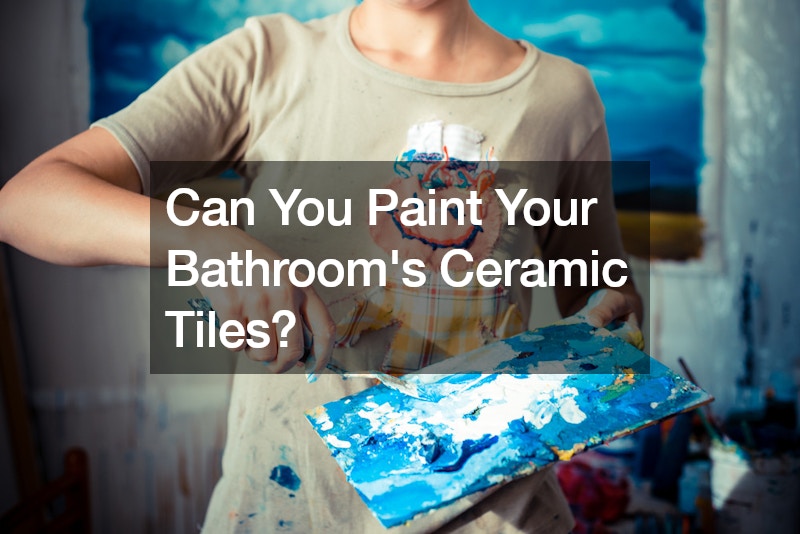Nowadays, people see remodeling videos on social media and get wild ideas for renovating their homes. However, it’s always best to get a professional business, like a remodeling company, to do any work. You don’t want to cause damage you’ll regret on perfectly good materials. For example, you may have seen others painting over countertops and believe you can do that anywhere, like on tiles.
That’s not necessarily true. Some tile textures, like white fluted tile, are better left untouched because the paint will probably not look that good. Also, painting over options like groutless bathroom floor tile is a terrible idea. The paint won’t hold up due to the moisture and frequent use. In fact, forget about tackling any kind of kitchen and bathroom floor tiles. Don’t even think about doing it with porcelain panels for shower either.
However, you can still try with wall tiles. While it’s always recommended to use professional services for renovations, you could paint wall tiles yourself. Begin with a sample tile instead of the wall directly. Research what paints work best and what colors you want. You must do your homework before you start something that could alter your home’s interior and value. Let’s find out more.
Does your bathroom look dingy and outdated? Do you want to renovate it but you don’t have the money to complete a whole new look? If your bathroom tiles are looking antiquated, you may want to check the possibility of simply painting over them instead of changing the tiles with new ones. There are basically two benefits: One, it’s a cheaper option; two, repainting tiles saves a lot of time.
But there’s a reason it is still preferable to just buy new tiles that can be applied using a wall tile levelling system if you have the money and the time. Not only are the new tiles going to give life to your dingy bathrooms, but they will also last longer than if you simply repaint the tiles. However, if you can’t wait to save more bucks, then painting the ceramic tiles is your next best option.
Can You Do It by Yourself?
Yes, you can, but it does not necessarily mean that it will be mistake-free and that the tiles will look as good as if they are repainted by a professional. Just remember that repainting tiles is only possible with wall tiles. Repainting floor tiles is not recommended because the paint will not hold up since bathroom tiles frequently get wet.
The first thing that you need to do is to sand the surface with 100-grit sandpaper and then wipe the tiles to remove the dust. You need to make sure that the tiles are clean. Otherwise, the grime and dirt will make the painted wall unsightly.

Next, you need to paint the tile wall with a primer or a hardener, which will cover up the small cracks in the tiles. After the primer has dried up, you can then paint the wall with epoxy paint in whatever colour you prefer.
Here’s the problem with painted ceramic tiles: The primer or hardener will cover the grout, which is one of the nicest things about ceramic tiles. If you paint them, you will lose that effect, and your wall will look like a plain and nondescript space. If your tiles have designs, you’ll cover that accent, too.
What Kind of Paint Do I Need?
While you can paint on almost all tiles, the best ones to paint are ceramic, porcelain, natural stone, or unglazed quarry tiles. As for glazed quarry tiles, you can forget about painting those since the materials in the paint just won’t bond with the tiles.
The kind of paint you need also depends on the type of tiles you have in your bathroom. Ceramic, porcelain, and unglazed quarry tiles work well with latex or epoxy paint in pre-mixed or ready-to-mix varieties. But for the surfaces that tend to get wet the most, such as the countertops, shower walls, and tub surrounds, you have to invest in epoxy paint since this type is more durable and more resistant to moisture.
You must remember that it’s not wise to paint all bathroom surfaces. Although you can use epoxy paint on the shower wall, there’s a good chance that this treatment won’t last for long because the paint getting wet will weaken it. It’s more likely to fade, blister, and peel prematurely.


